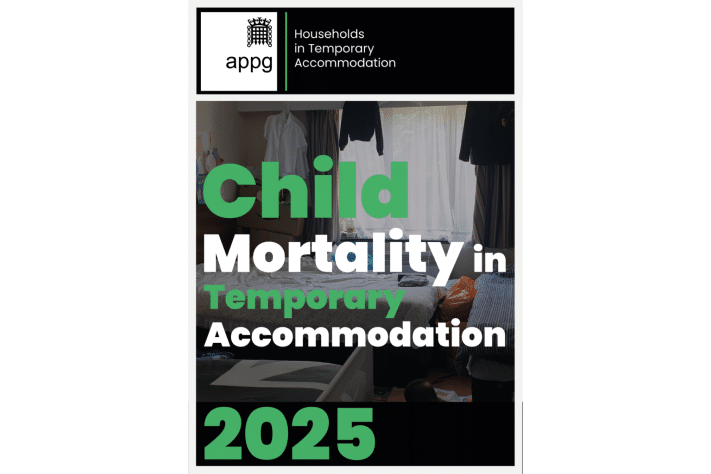31st January 2025
We are delighted to share this Voices blog by Jane Cook – Jane is a specialist health visitor and activist who has worked in inclusion health for almost 40 years working with children and families experiencing homelessness.
This week, a report was published by the Households in Temporary Accommodation All Party Parliamentary Group (APPG), “Child Mortality in Temporary Accommodation 2025” with some hard-hitting statistics:
- Out of the 3,605 child deaths in England, 80 children have died whilst living in temporary accommodation.
- This number accounts for 3% of the total number of child deaths during this period.
These numbers were obtained from the National Child Mortality Database between 1 October 2023 and 30 September 2024. This is the first time that data on children living in temporary accommodation, when they died, has been recorded. Every death is tragic – for the family in particular, but also for society as a whole as these deaths were preventable and avoidable.
Between 1 April 2019 to 31 March 2024, 74 children have died with temporary accommodation as a contributing factor to their vulnerability, ill-health, or death. And within this group, 58 were babies under the age of 1.
This year’s data is particularly concerning as it presents an upward trend on data presented last March by the APPG, with an increase in deaths when temporary accommodation was deemed to be a contributing factor; there were 55 deaths of children (between 1 April 2019 and 31 March 2023) and of these, 42 were under 1s.
This is shocking when England has the fifth largest economy in the world and these statistics are indicative of the consequences of years of failures to build affordable and decent homes.
The number of children experiencing homelessness has rapidly increased and has now reached record numbers with over 161,000 children homeless. The immediate and long-term impact on children has been well highlighted over the years, especially by Professor Monica Lakhanpaul.
Children are being accommodated in temporary accommodation that is often substandard with many families living in one room for more than 6 weeks and often over a year with no access to a kitchen or a cot for their baby. Families are frequently moved with very little notice and with no notification system in place – this was a key recommendation in the Laming Review (2003), more than 20 years ago. However, this recommendation was never implemented, leaving children who are experiencing homelessness at even greater risk. The cumulative impacts of these policy failures have resulted in too many babies and children paying the ultimate price, as their young lives are needlessly cut short.
Health visitors are in a unique position as public health specialists to work with families experiencing homelessness due to their role in working with and supporting families, conducting outreach to families in the community (especially those who may be on the margins of society), and working in partnership with both statutory and voluntary sector agencies in promoting the health of both children and adults. Their role, to also safeguard and protect children, also places them in a unique position to identify the most vulnerable children and families in society, to identify the causes of harm, to advocate for them and to identify solutions. Through the Institute of Health Visiting, health visitors have a voice to shout that these shocking statistics are unacceptable and a change is demanded to prevent future deaths. Every child has a right to a decent home where they can grow, develop and thrive








